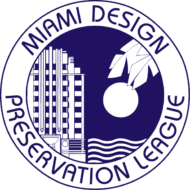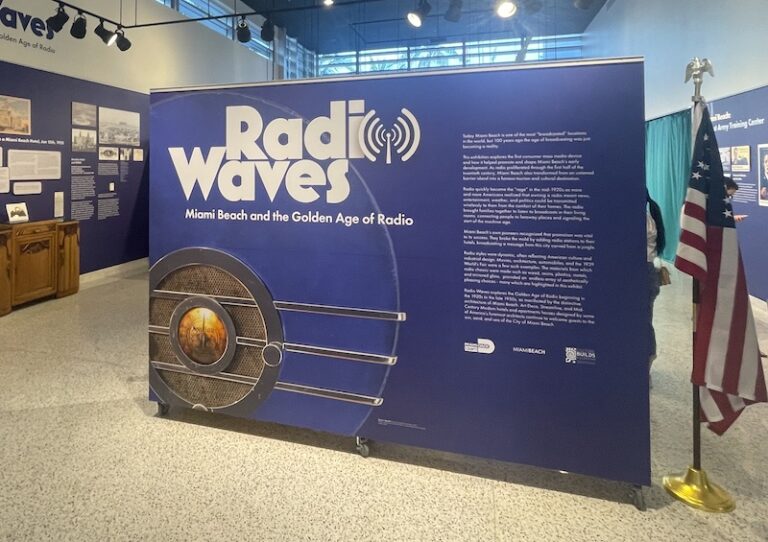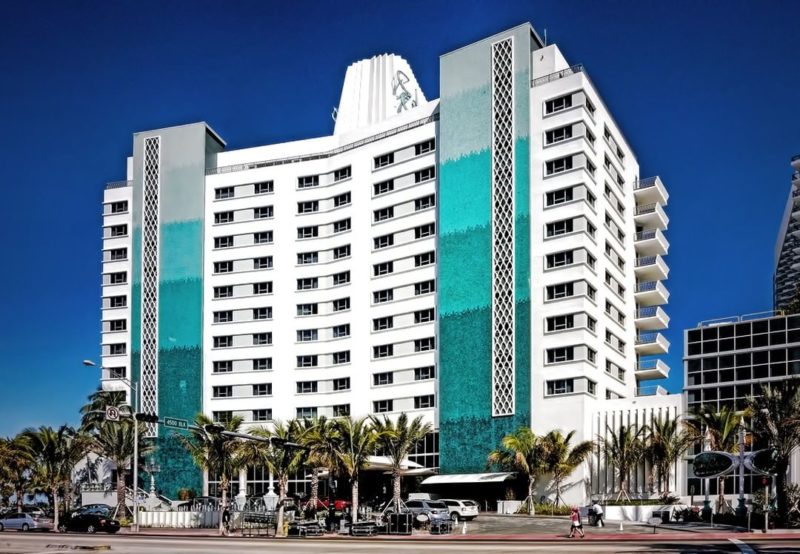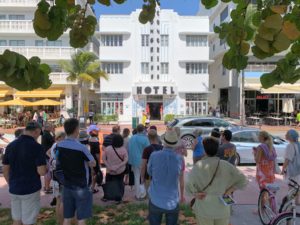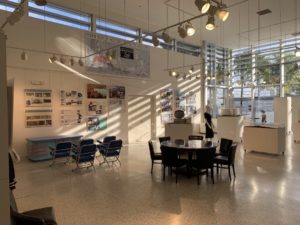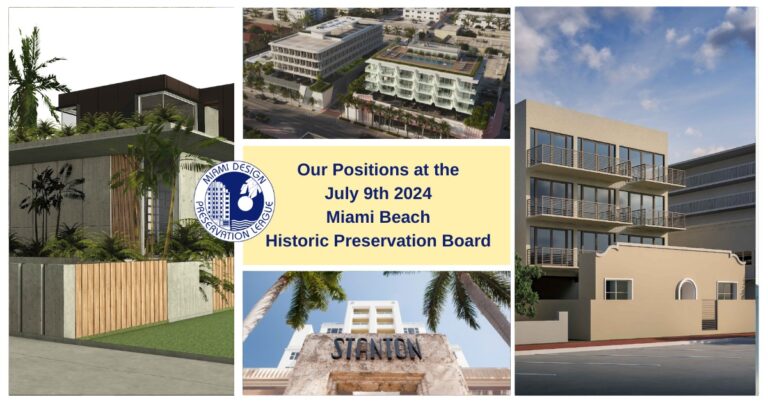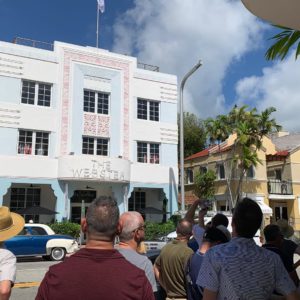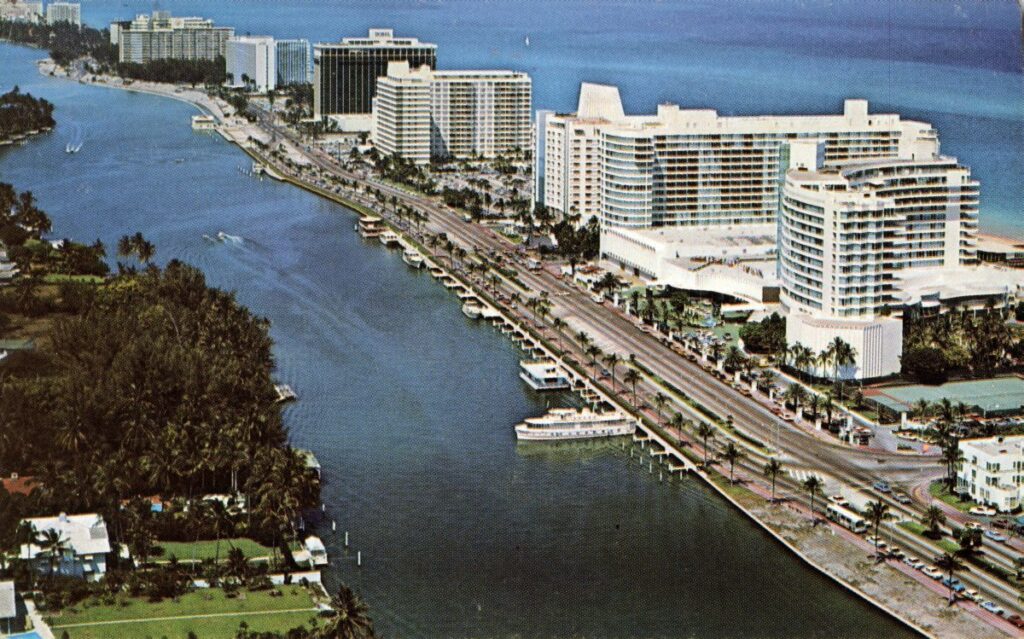
Located on a one-mile stretch of land on Collins Avenue from 44th to 53rd St between the Atlantic Ocean and Indian Creek, the Morris Lapidus / Mid-20th Century Historic District is home to some of the most iconic Miami Modern (MiMo)/Post-War Modern architecture in the city.
Miami Modern architecture became popular in the 1950s following WWII, when the country was entering a more prosperous place and the economy was thriving with new products and technologies like television, air conditioning, and the rise of the automobile.
This was a time of post-war capitalism when the middle class grew significantly. Families across the country were taking road trips, and Miami Beach became a glamorous vacation destination for many affluent tourists.
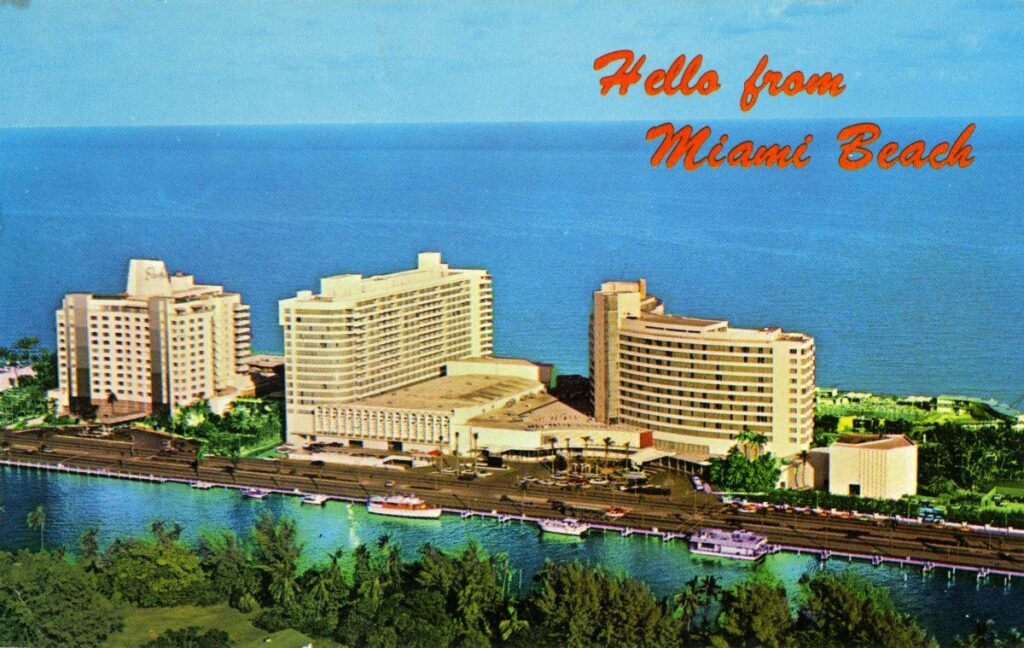
The northern section of Collins Avenue past 41st Street is often referred to as Millionaire’s Row, as it was home to many opulent homes and luxury hotels.
12 of the 14 properties in the district are mid-20th century structures built between 1954 and 1966. The district was historically designated by the City of Miami Beach in 2009. You can read the full designation report here.
This district is named after Morris Lapidus (1902-2001), one of Miami Beach’s quintessential architects. Lapidus emigrated from Russia to New York as a child and graduated from Columbia University in 1927. He began his career in the city as a retail designer.
He first came to Miami Beach in 1929 on his honeymoon and returned after WWII to pursue his dream of designing luxury hotels.
The Lapidus district has an oceanfront urban resort character, defined by its lavish hotels and condominiums, like:
- The Fontainebleau Hotel – Morris Lapidus, 1954 (4441 Collins Avenue)
- The Eden Roc Hotel – Morris Lapidus, 1955 (4525 Collins Avenue)
- The Executive – B. Robert Swartburg, 1959 (4925 Collins Avenue)
- The Crystal House – Morris Lapidus, 1960 (5055 Collins Avenue)
- Imperial House – Melvin Grossman, 1961 (5255 Collins Ave)
- Miami Beach Resort & Spa – Melvin Grossman, 1962 (4835 Collins Avenue)
- The Alexander (Seacoast Towers) – Charles McKirahan, 1962 (5225 Collins Avenue)
- Seacoast Towers South – Morris Lapidus, 1963 (5051 Collins Avenue)
- Seacoast Towers East – Morris Lapidus, 1965 (5151-5161 Collins Avenue)
Perhaps the most iconic of the post-war buildings in Miami Beach, the Fontainebleau Hotel opened in 1954.
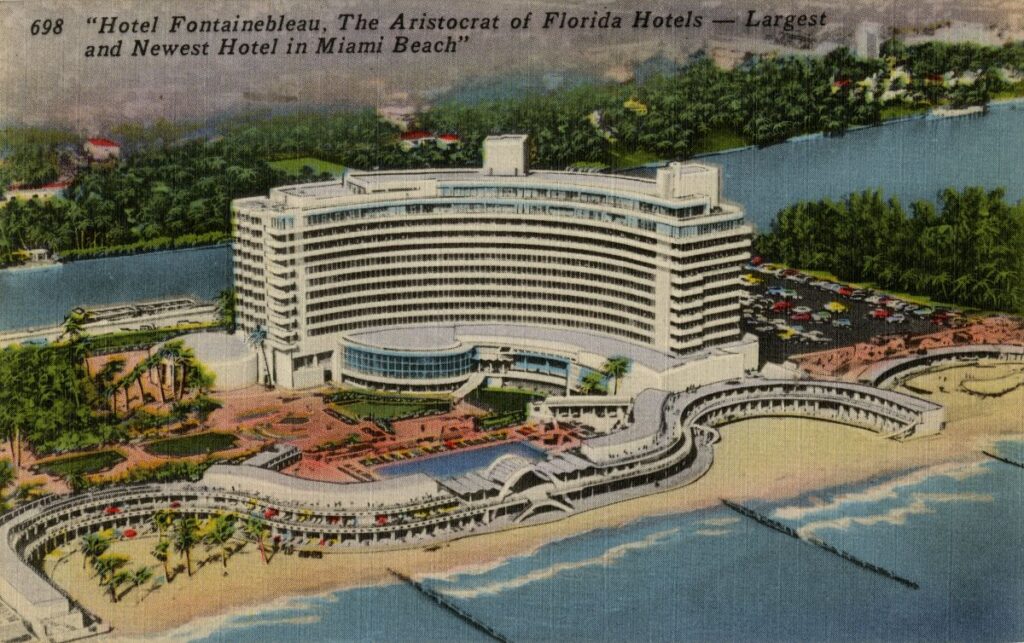
Before the existence of the district, this plot of land was the residence of James Snowden, an oil businessman. He then sold it to Harvey Firestone, the founder of Firestone Tire and Rubber Company.
In 1952, developer Ben Novack purchased the estate with plans to build a $14,000,000 hotel on the site.
Novack had envisioned a large, luxurious hotel in Miami Beach to replace the single-family mansion.
The ambitious project to build a large luxury mid-century hotel in Miami Beach was spearheaded by Novack as he and Lapidus began working on the Fontainebleau.
The glamorous hotel was a huge success and played a significant role in reviving the image of Miami Beach following WWII.
The Fontainebleau has been featured in many films, including The Bellboy (1960), Goldfinger (1964), Scarface (1983), The Bodyguard (1992), and The Birdcage (1996).
The Fontainebleau’s success led to new Lapidus commissions, including the Eden Roc, Seacoast Towers, Crystal House, and many others.

The Post-War Modern style was applied to hotels, commercial buildings, apartment houses, and single-family homes in Miami Beach.
MiMo became well-known for its dramatic elements such as accordion-like folded plate roofs, parabolas, delta wing shapes, arches, asymmetrical roofs, curved walls, and soaring pylons.
Other design elements and materials that were featured in this architectural style include brise soleil, exotic accents, wall sculptures in relief, decorative panels with geometric patterns, and breeze blocks. Prevalent in Lapidus’ works were retro “cheese holes,” “woggles,” and “beanpoles.”

Many luxury resorts fronting the Atlantic Ocean also featured grand lobbies, cocktail lounges, ballrooms, banquet halls, spas, enormous swimming pools, and private beach cabanas.
The district’s modernist luxury buildings became known for using architecture as advertising, aiming to outdo one another to compete for business.
Soon, these hotels became definitive of Miami Beach and a part of its unique history.
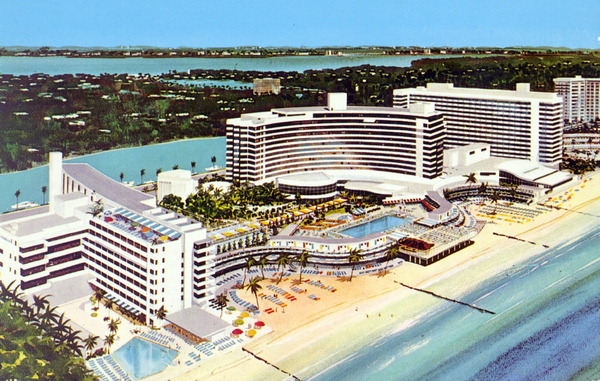
A quote from Beth Dunlop, a columnist for the Miami Herald, was included in the district’s historic designation report. It says the following on Post-War Modern/Miami Modern architecture:
“In the decades after World War II, these were the buildings that expressed our ebullience, our energy, our faith in the future. They were catchy, kitschy, eccentric, and engaging, with loads of curbside appeal – our first auto-age buildings, really, not to mention space age. We were going places then – to the suburbs, to the moon – and our buildings told us so. You could see it in roofs that cantilevered daringly, in facades that swooped saucily, in towers that took off like a Buck Rogers rocket ship, in aerodynamic fins and prows that seemed to lift otherwise mundane buildings right off the ground.”
